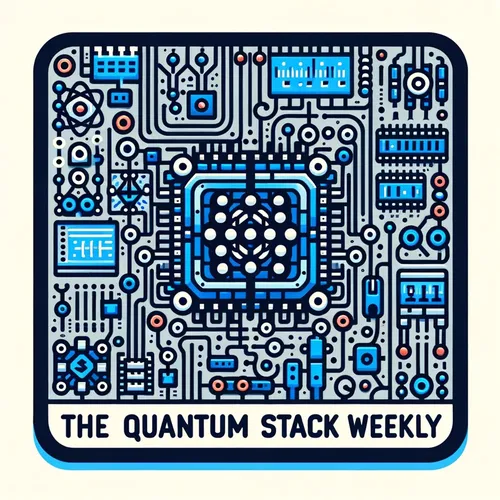Quantum Leap: Uniting Noisy Chips into a Robust Processor | The Quantum Stack Weekly
- Author
- Quiet. Please
- Published
- Wed 27 Aug 2025
- Episode Link
- https://www.spreaker.com/episode/quantum-leap-uniting-noisy-chips-into-a-robust-processor-the-quantum-stack-weekly--67531355
This is your The Quantum Stack Weekly podcast.
What if I told you that just this week, scientists have taken a leap toward solving one of quantum computing’s most wicked puzzles by showing it’s possible to connect small, noisy quantum chips into a single, unified processor—and it works even if those links are far from perfect? This isn’t science fiction; it’s a real result just published by a team at the University of California, Riverside. I’m Leo—Learning Enhanced Operator—and today, on The Quantum Stack Weekly, let’s dive into this modular marvel and why it could reshape how we build quantum computers, forever.
Picture this: You’re assembling a grand library, but instead of one massive building, you use several smaller branches scattered across the city, all loosely connected by book couriers—even if some have leaky bookbags. That’s the crux of the UC Riverside breakthrough. Led by Mohamed Shalby, their team simulated networks of small quantum chips—each a powerful little branch—and found that, using the right error correction codes, linking these modules into a single processor is remarkably robust, even when the “connections” are up to ten times noisier than the chips themselves. The key? The surface code, a kind of quantum spell that shields information from chaos, much like insulating each book branch with fireproof vaults and highly organized metadata.
Until now, quantum engineers—myself included—have obsessed over making monolithic chips ever larger, believing every connection had to be virtually flawless. But Shalby’s findings flip that on its head. “We don’t have to wait for perfect hardware to scale quantum computers,” he said. With this approach, we can harness the chips already in our labs, connect them with what we have—fiber links, photonic channels, whatever—and still march toward useful, large-scale fault-tolerant machines. That’s a seismic shift. It means we’re no longer waiting for some immaculate future material, or a utopian cleanroom: we start scaling now.
Look, as someone who’s spent late nights coaxing qubits into coherence—sometimes feeling like a chef persuading soufflés not to fall—the parallel with current affairs is striking. Just this week, IBM and AMD announced a partnership to marry quantum chips with classical supercomputers, chasing the next computing superpower. Meanwhile, Vietnam launched a national quantum network, betting big that even imperfect connections, if cleverly managed, can spark whole new industries.
Inside a real quantum lab, it’s all chillers buzzing, LEDs blinking, and the careful dance of lasers threading through optical breadboards. The air hums with electric possibility—and now, more than ever, with the promise that our splintered early hardware can finally unite, like strands of a quantum tapestry weaving strength from many immensely fragile threads.
What does this mean for the world beyond the lab? Imagine artificial intelligence or climate modeling done on distributed clusters, error correction knitted into each nerve. Supply chains, cryptography, pharmaceuticals—all could accelerate, not because every component is perfect, but because, together, they’re resilient. That’s a quantum perspective I see mirrored in society these days: progress, not perfection, as our guiding principle.
Thank you for tuning in to The Quantum Stack Weekly. If you have questions or want a topic discussed on air, email me anytime at [email protected]. Please subscribe, tell your friends, and remember—this has been a Quiet Please Production. For more, check out quietplease.ai.
For more http://www.quietplease.ai
Get the best deals https://amzn.to/3ODvOta
